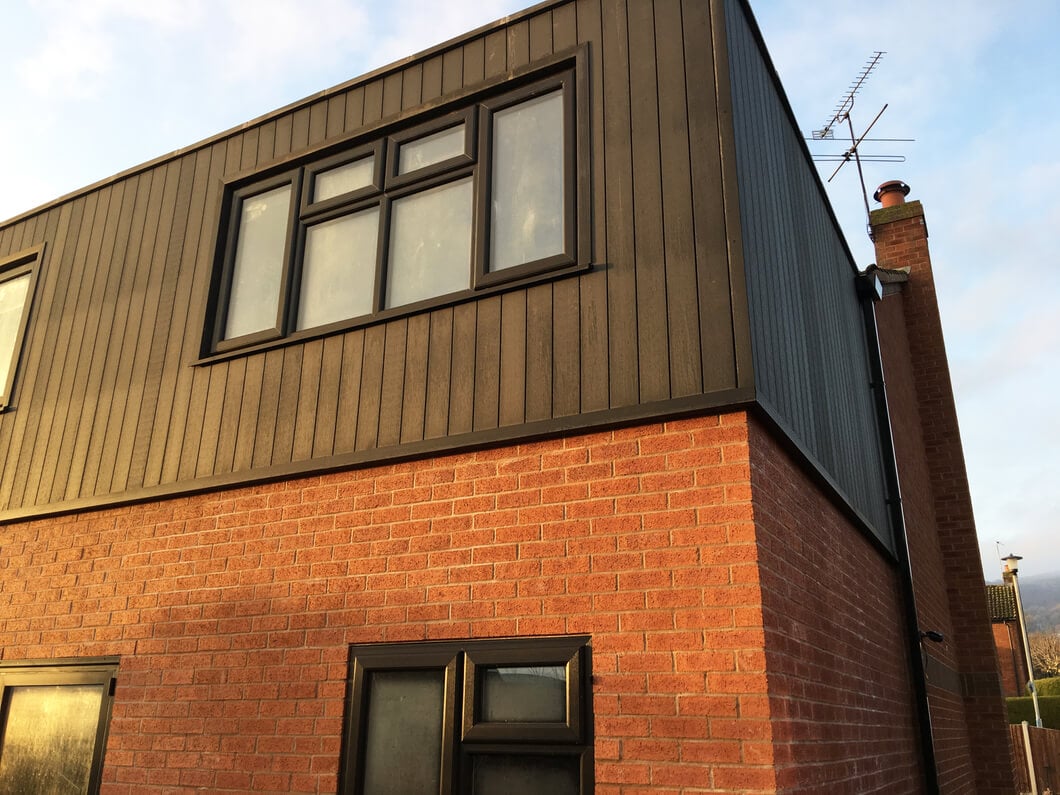When choosing the best type of wall cladding for your project, your first decision will likely come down to style and appearance. After all, you want to be proud of the finished result.
Beyond aesthetics, it's also important to consider other factors such as the cladding material, overall cost, and quality. In this helpful house cladding guide, we’ll look at a wide range of cladding options - from timber cladding to fibre cement and tile cladding—and explore their specific benefits and decorative properties.
The term cladding refers to any material that covers the external walls of a building. It can be attached either directly to the walls or fixed to supporting battens. Adding wall cladding can provide extra protection to the exterior of your home or commercial building and completely transform its appearance.
QUICK SUMMARY
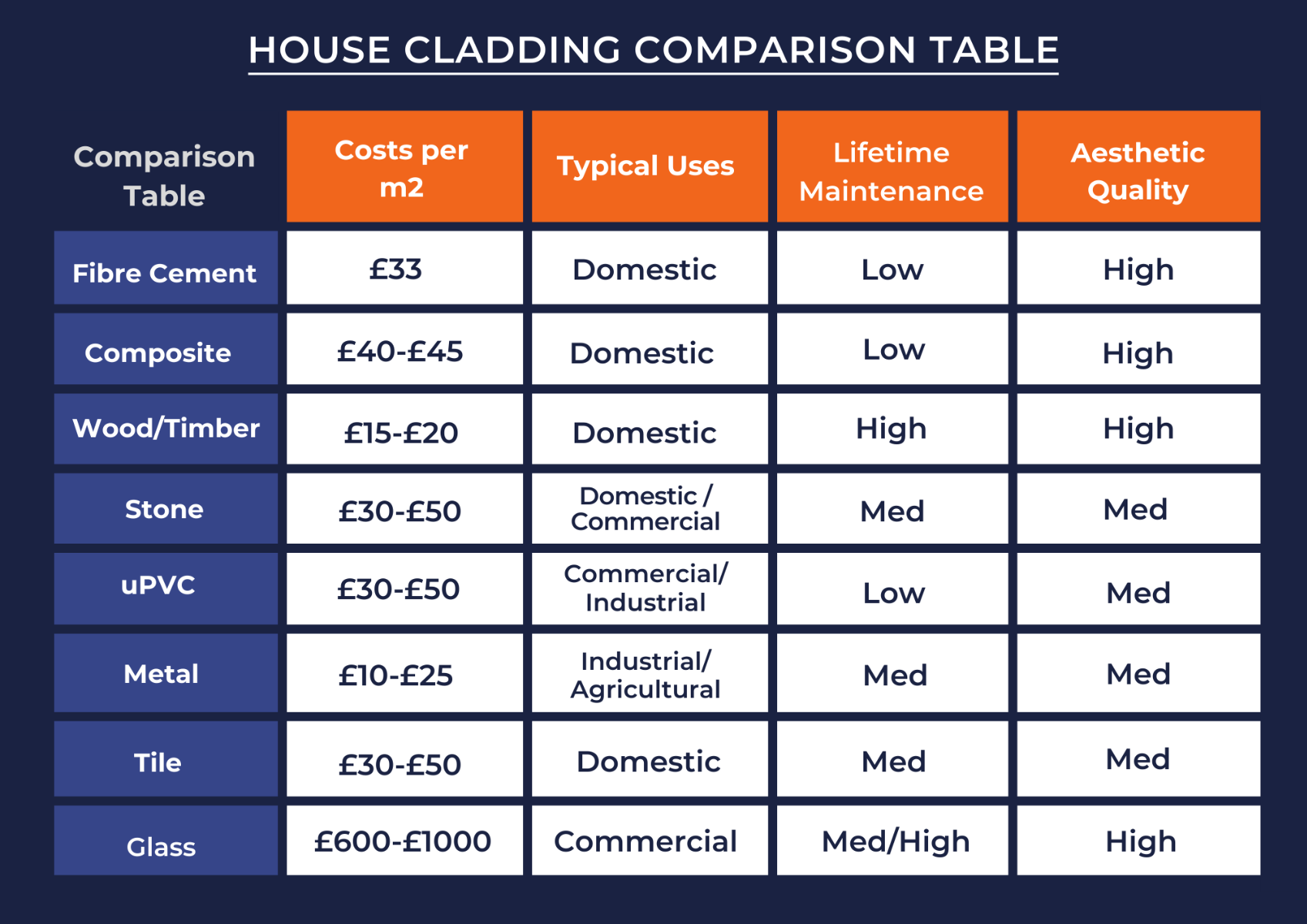
If you are looking for a cost-effective cladding option, wood or metal materials are a popular choice. If the aesthetics for a domestic build are your priority, fibre cement, composite or glass are fantastic options. Finally, if you are looking for a low-maintenance install-and-go cladding material, uPVC is ideal.
Read on to learn more about each option.
Types of House Cladding
FIBRE CEMENT CLADDING
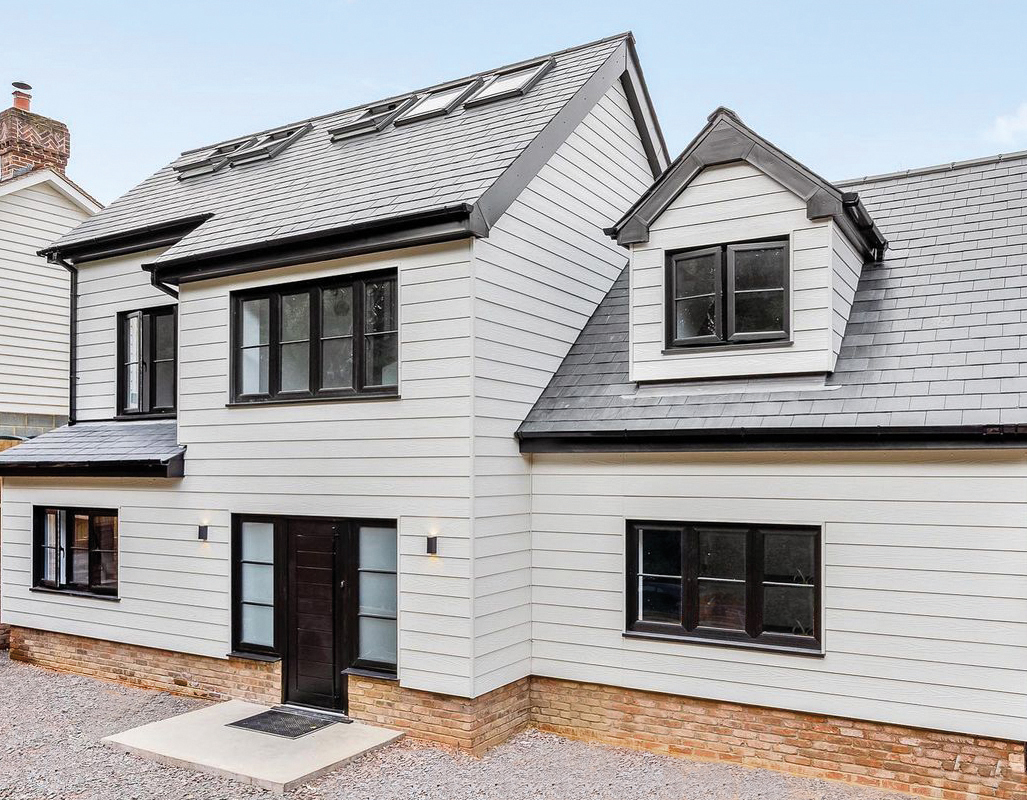
Fibre cement cladding materials are made from a combination of sand, cement, cellulose fibres, and water.
Cladco’s fibre cement wall cladding boards provide a home with a professional, high-quality finish and feature a subtle, natural woodgrain-effect texture on the surface. This is a low-cost cladding option that also requires minimal maintenance, keeping upkeep costs low.
- Fibre cement wall cladding is commonly installed on domestic homes and provides a durable, easy-to-maintain finish.
- Fibre cement cladding is a composite material made from a blend of cement, cellulose fibres, clay, iron, and limestone. The addition of sand enhances the boards’ resilience to harsh weather conditions and their natural fire resistance.
- Fibre cement boards are an easy-to-install cladding option, fitted using a simple feather board technique.
- This type of cladding offers good weather resistance, with minimal expansion and contraction in both hot and cold temperatures. These boards are available with a textured woodgrain surface that replicates the appearance of timber, with a variety of colours to choose from.
- Expect to pay from approximately £27.50 per square metre.
COMPOSITE CLADDING
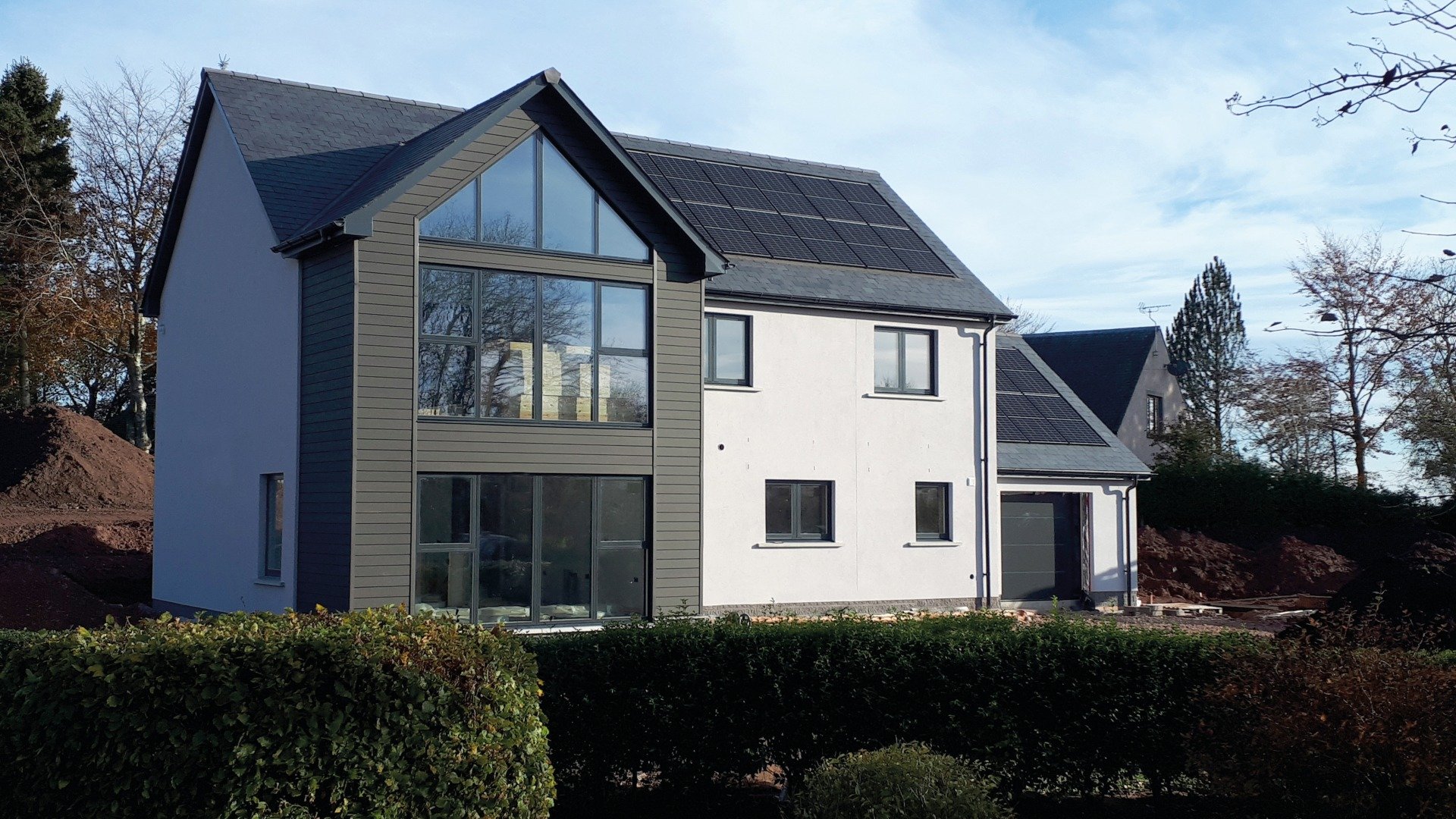
Composite cladding is manufactured from a hybrid of wood and plastic. It has become an increasingly popular cladding material in recent years thanks to its aesthetic appeal and durability. Cladco Signature composite wall cladding is a high-quality option available in a choice of eight colours, and comes in both woodgrain and original finishes to suit any home or project.
- Composite cladding is a popular choice for homeowners looking to breathe new life into their property. It can be installed horizontally or vertically, offering flexibility during installation. It also helps protect the exterior or render of a property.
- Cladco composite wall cladding is made from 60% FSC®-certified recycled wood fibres and 40% recycled plastic, making it an environmentally friendly and durable cladding material.
- Composite is one of the most adaptable external cladding materials on the market. It can be cut to custom lengths using basic woodworking tools and is complemented by matching composite trims and fascia boards.
- There is no need to sand, varnish, or paint composite cladding boards, making them a low-maintenance alternative to traditional timber cladding.
- Prices start from approximately £40 per square metre.
WOOD / TIMBER CLADDING
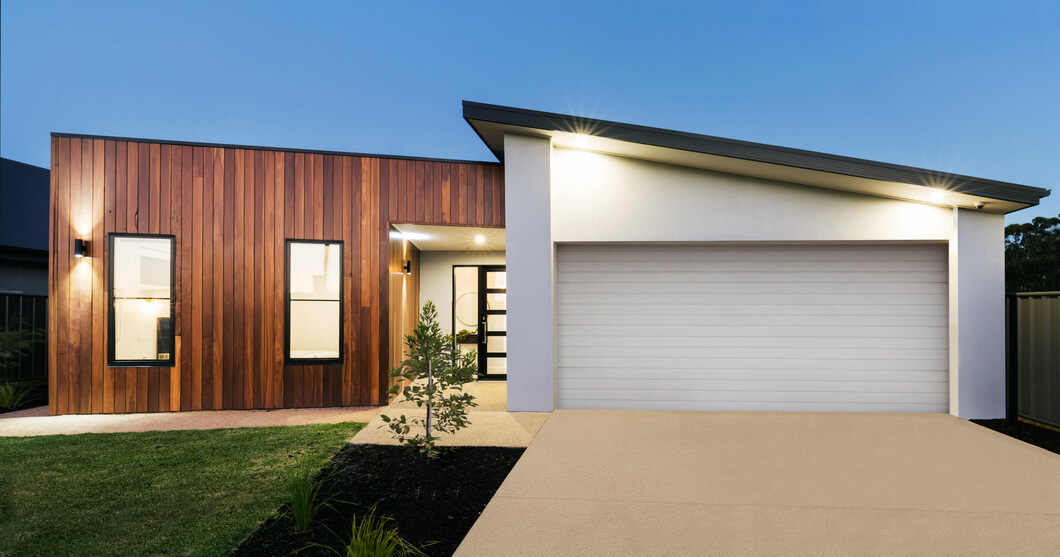
Timber cladding is one of the most natural types of cladding materials available. When applied to the exterior of a home, it can add a timeless, rustic appeal. Although easy to install, timber cladding requires annual treatment and maintenance to keep it looking as good as new. Structurally, natural timber is very stable and is popular in conventional designs.
- Timber cladding has proven to be one of the most popular types of cladding in recent years due to its versatility and natural properties. It is also one of the most environmentally friendly and reusable exterior cladding systems available on the market.
- Timber cladding can be used both indoors and outdoors, creating a natural and warm aesthetic for any home.
- Available in a variety of colours and styles, timber offers a wide range of options for both traditional and modern cladding designs.
- Wood cladding can be installed vertically, diagonally, or horizontally, depending on the desired style.
- Expect to pay from £40 per square metre. Prices may vary depending on the materials used and labour costs.
STONE CLADDING
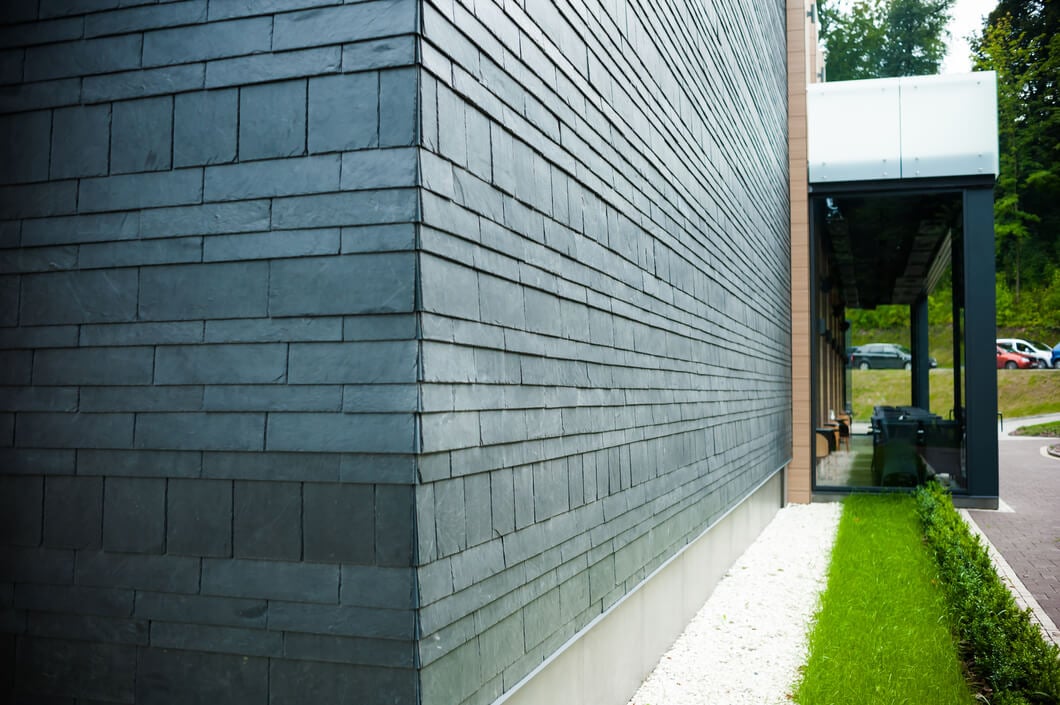
Comprising layers of natural stone, stone cladding creates a rugged exterior and is particularly popular with houses located in more rural settings. The many variations of stone cladding also make it a popular choice for new builds seeking a unique finish that stands out from neighbouring properties.
- Stone cladding is a good option for domestic properties, offering a more traditional aesthetic for the exterior of a home.
- It is a great choice for buildings exposed to harsh weather throughout the year. The natural properties of stone help reduce the risk of damp and water ingress.
- Stone cladding can include a range of natural materials such as marble, sandstone, or slate. In recent years, more people have opted for lightweight alternatives like simulated stone veneers, which offer a similar look at a more cost-effective price and are easier to install on solid walls.
- Stone is available in various sizes, textures, and cuts, and can be installed in either uniform lengths or random patterns.
- Expect to pay from £50 per square metre for faux stone cladding, while real stone cladding will cost noticeably more due to the craftsmanship required for installation.
uPVC CLADDING
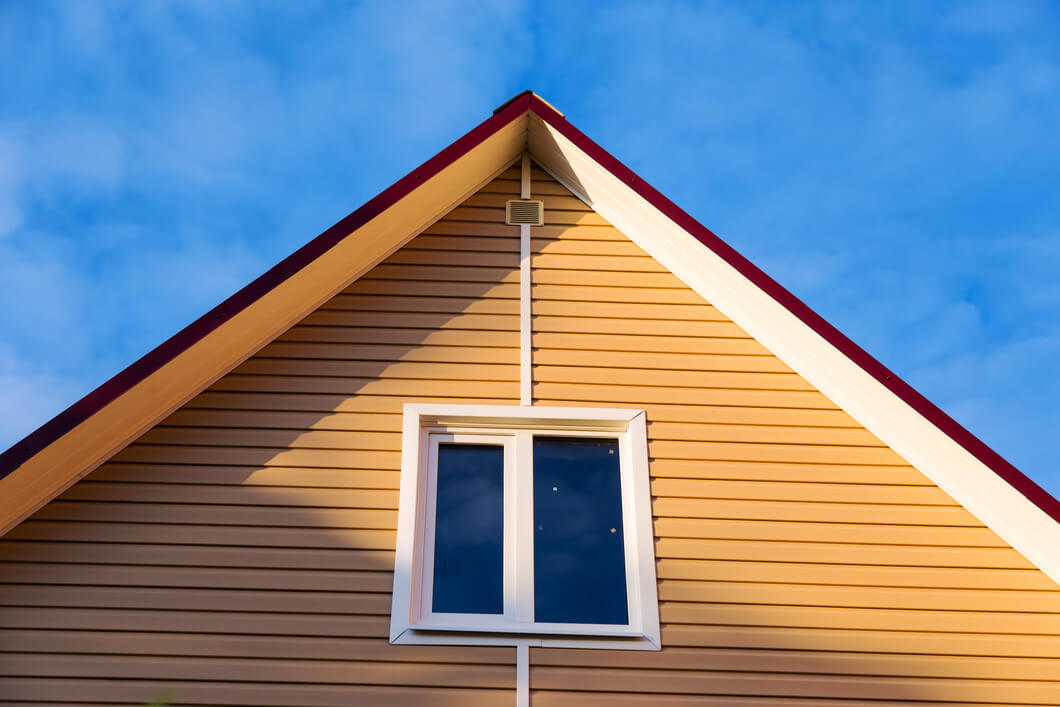
uPVC or PVC Cladding is an affordable cladding option that requires minimal maintenance and is quick to install or repair if needed. It is commonly seen on holiday properties and portable rental homes, where cladding can be used to achieve a consistent look on a budget.
- uPVC (Unplasticised Polyvinyl Chloride) is one of the most cost-effective cladding options available. It is a popular choice due to its wide range of colours and lightweight properties.
- uPVC is easy to maintain and requires very little upkeep throughout its lifespan. Once installed, a simple wash with warm water and a brush is generally all that's needed.
- Offering beneficial features such as fire resistance, uPVC helps prevent the spread of flames. It is also UV-protected to reduce fading caused by sun exposure (always refer to the manufacturer's product information).
- uPVC can also provide additional thermal insulation.
- Expect to pay between £30 and £50 per square metre.
BRICK CLADDING
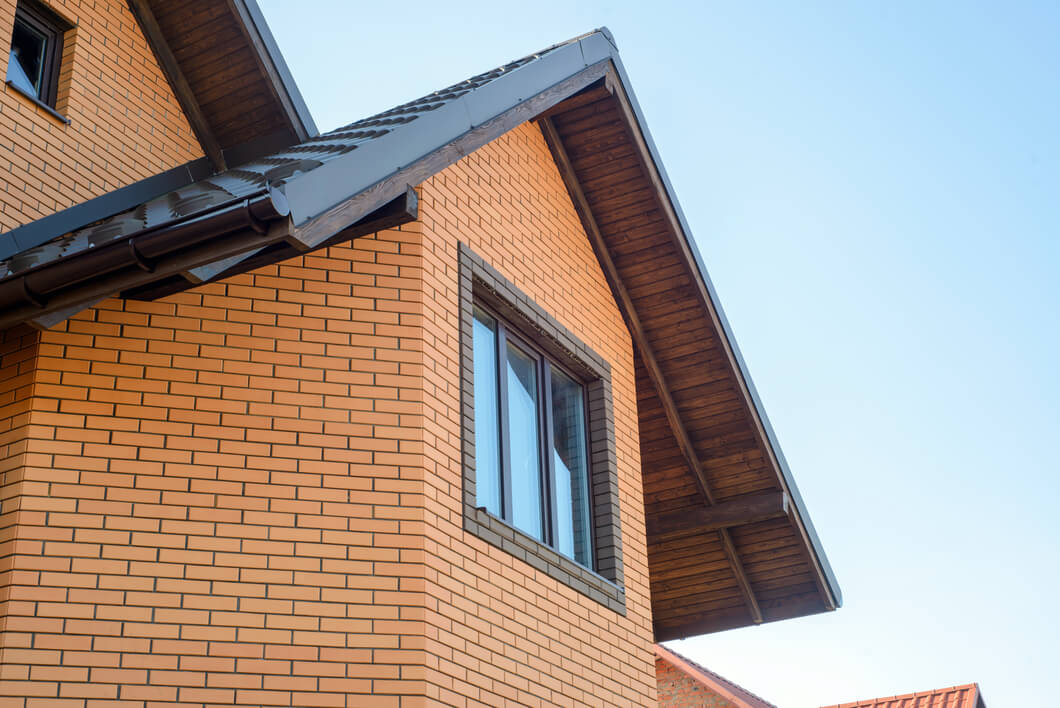
Brick cladding panels can transform the appearance of a home, with options available to suit any architectural style. Brick may be the ideal choice if you're looking to replicate a classic pattern or protect the exterior of your property from damage and weathering.
- When installed on exterior walls, brick cladding can replicate the look of traditional red bricks. These panels offer customisation options to suit your home’s design and are easy to install, as they are supplied in large, manageable sections.
- Available in a wide range of colours and styles, brick cladding is a popular option among homeowners.
- It creates a modern, durable exterior finish that stands the test of time.
- Expect to pay from £35 per square metre.
METAL CLADDING
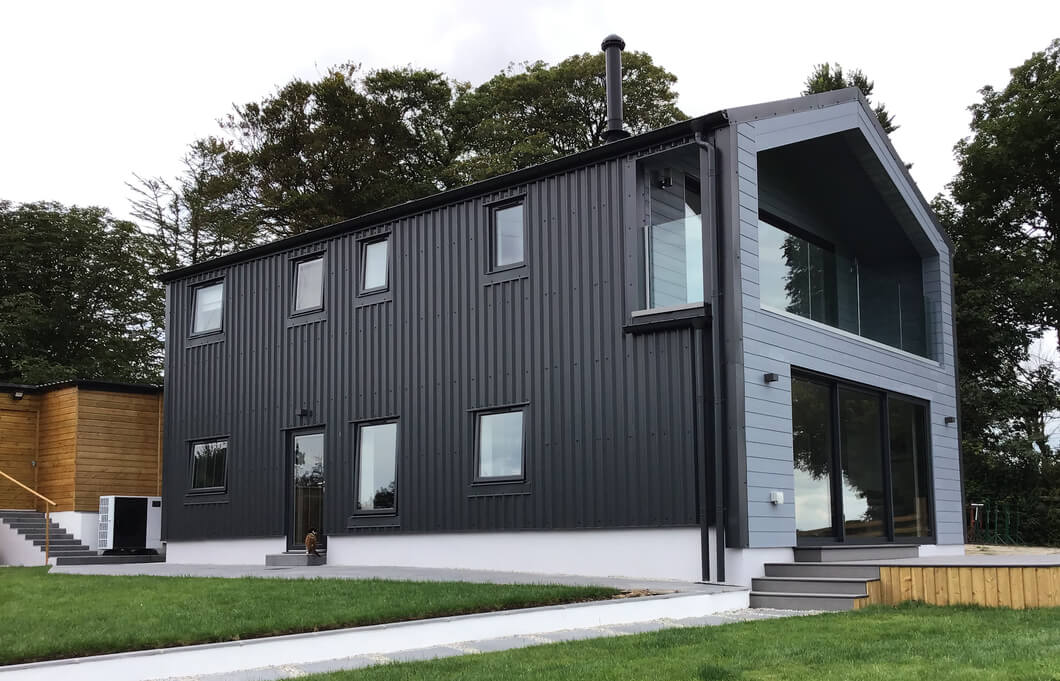
Metal cladding materials can often be found on agricultural and commercial buildings. They offer an easy-to-clean metal surface that reflects the industry it represents.
Cladco Roofing supplies metal cladding sheets that offer a modern alternative to traditional materials like timber. Sheets are available in a variety of coatings and colours to suit both your budget and project requirements. Choose from scratch-resistant PVC Plastisol, smooth polyester paint, or plain galvanised steel sheets.
- Metal cladding is commonly used to cover industrial and agricultural buildings. In recent years, it has also become a popular choice for larger domestic projects such as barn conversions.
- Steel and aluminium are widely used metals for cladding. When combined with protective coatings, they are available in a broad range of colours and finishes.
- As a non-combustible material, metal cladding provides additional fire protection. Aluminium is often selected specifically for this benefit.
- Metal cladding also offers a good level of insulation and is highly durable, making it a preferred option for large-scale or working buildings.
- Expect to pay from £15 per square metre for plain galvanised steel, and from £25 per square metre for PVC Plastisol-coated sheets.
TILE CLADDING
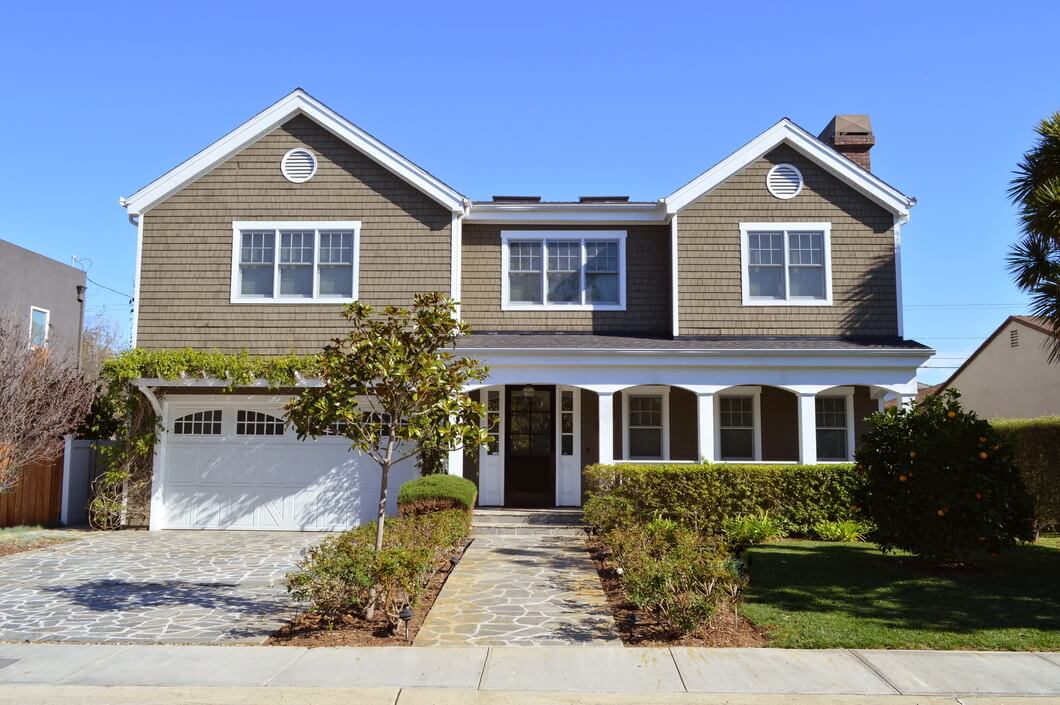
Tile cladding is a versatile material that can be manufactured from both natural and manmade materials, such as slate, clay, or plastic. It’s a popular choice for homeowners looking to enhance kerb appeal and make their property stand out. In addition to its visual appeal, tile cladding is also valued for its insulating properties and protection against the elements.
- Tile cladding panels are commonly used for interior applications but are also a popular option for external walls. Tiles can be customised to form unique designs or applied uniformly for a consistent finish.
- With a wide range of colours and finishes available, tile cladding is well-suited to creative and bespoke applications. Hanging tiles offer a more traditional aesthetic but may come at a higher cost (typically £55+ per square metre).
- Handmade tiles can lend a contemporary look to a building, though they often involve a higher initial investment.
- Excellent insulation makes tile cladding an ideal option for properties in colder climates.
- Expect to pay from £28 per square metre, depending on the style and finish selected.
GLASS CLADDING
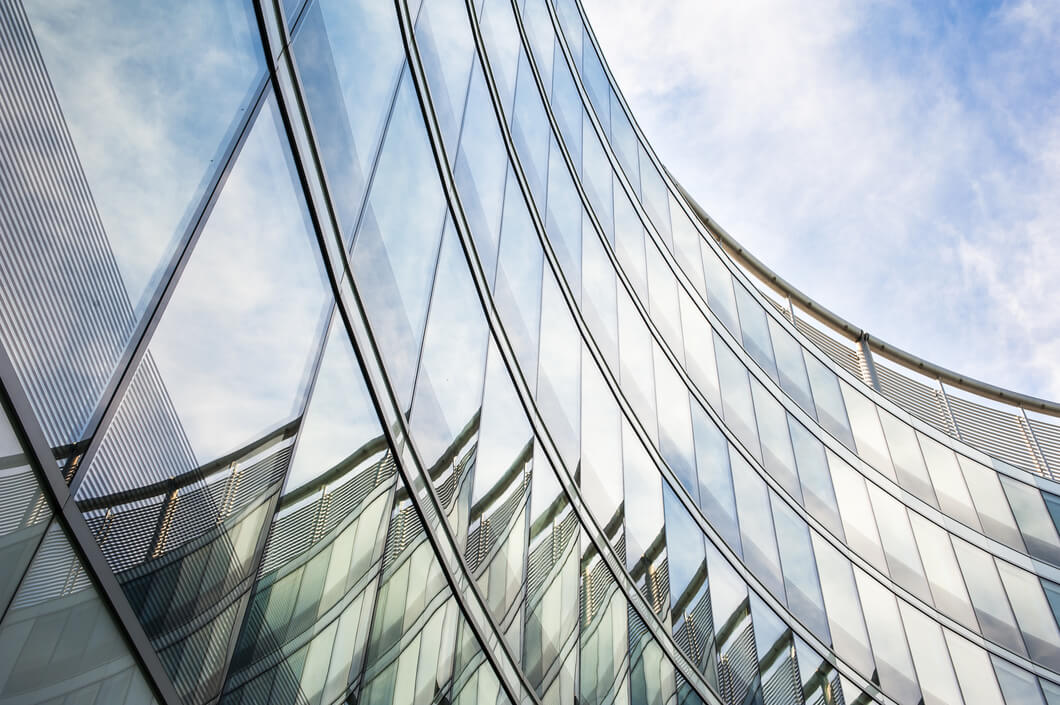
Glass cladding offers a sleek, contemporary aesthetic while allowing natural light to flood into a building. Although it is one of the more expensive cladding options per square metre, its durability and low maintenance make it a long-term investment.
- Glass cladding is a popular choice among architects aiming to create a bold visual statement. Iconic structures such as the Louvre Museum in Paris and The Shard in London showcase how glass cladding is used to achieve modern, eye-catching designs—particularly in commercial and business developments.
- This material is low-maintenance, typically requiring only an annual clean. It is especially well-suited for large buildings, as it doesn’t warp or deform over time.
- Lightweight panels allow for straightforward installation on support battens, and custom shapes can be easily achieved to meet unique architectural requirements.
- Expect to pay from £600 per square metre.
Conclusion:
Deciding which type of cladding is best for your project ultimately depends on the look you want to achieve, the performance requirements, and the quality and suitability of the materials. Choose a cladding option that aligns with your budget and intended application, and always seek professional advice before selecting or installing your cladding.
Have a question about fibre cement, composite, or metal cladding? Call us on 01837 659901 or email [email protected] for product advice and support.
